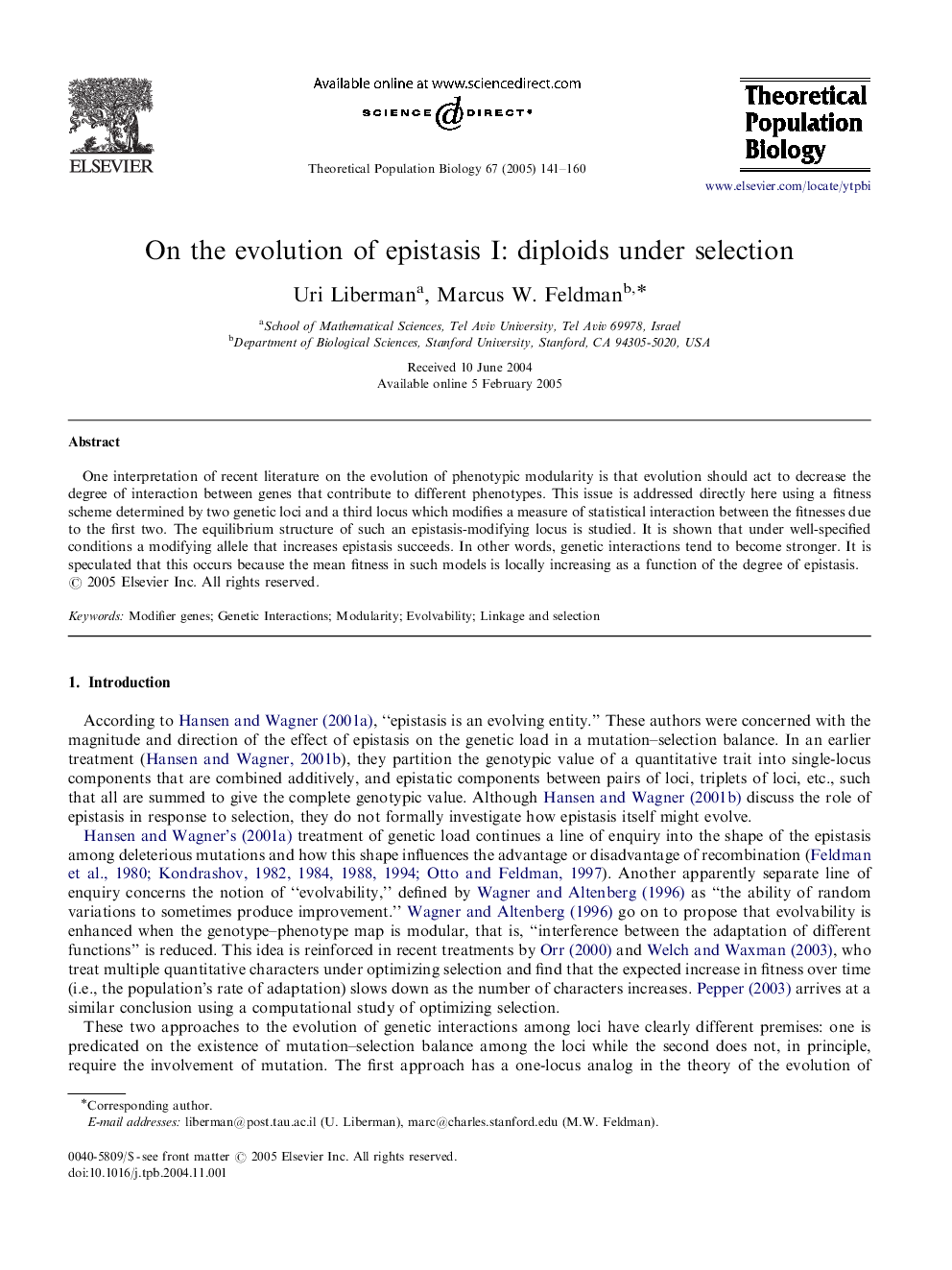| Article ID | Journal | Published Year | Pages | File Type |
|---|---|---|---|---|
| 9471442 | Theoretical Population Biology | 2005 | 20 Pages |
Abstract
One interpretation of recent literature on the evolution of phenotypic modularity is that evolution should act to decrease the degree of interaction between genes that contribute to different phenotypes. This issue is addressed directly here using a fitness scheme determined by two genetic loci and a third locus which modifies a measure of statistical interaction between the fitnesses due to the first two. The equilibrium structure of such an epistasis-modifying locus is studied. It is shown that under well-specified conditions a modifying allele that increases epistasis succeeds. In other words, genetic interactions tend to become stronger. It is speculated that this occurs because the mean fitness in such models is locally increasing as a function of the degree of epistasis.
Related Topics
Life Sciences
Agricultural and Biological Sciences
Agricultural and Biological Sciences (General)
Authors
Uri Liberman, Marcus W. Feldman,
